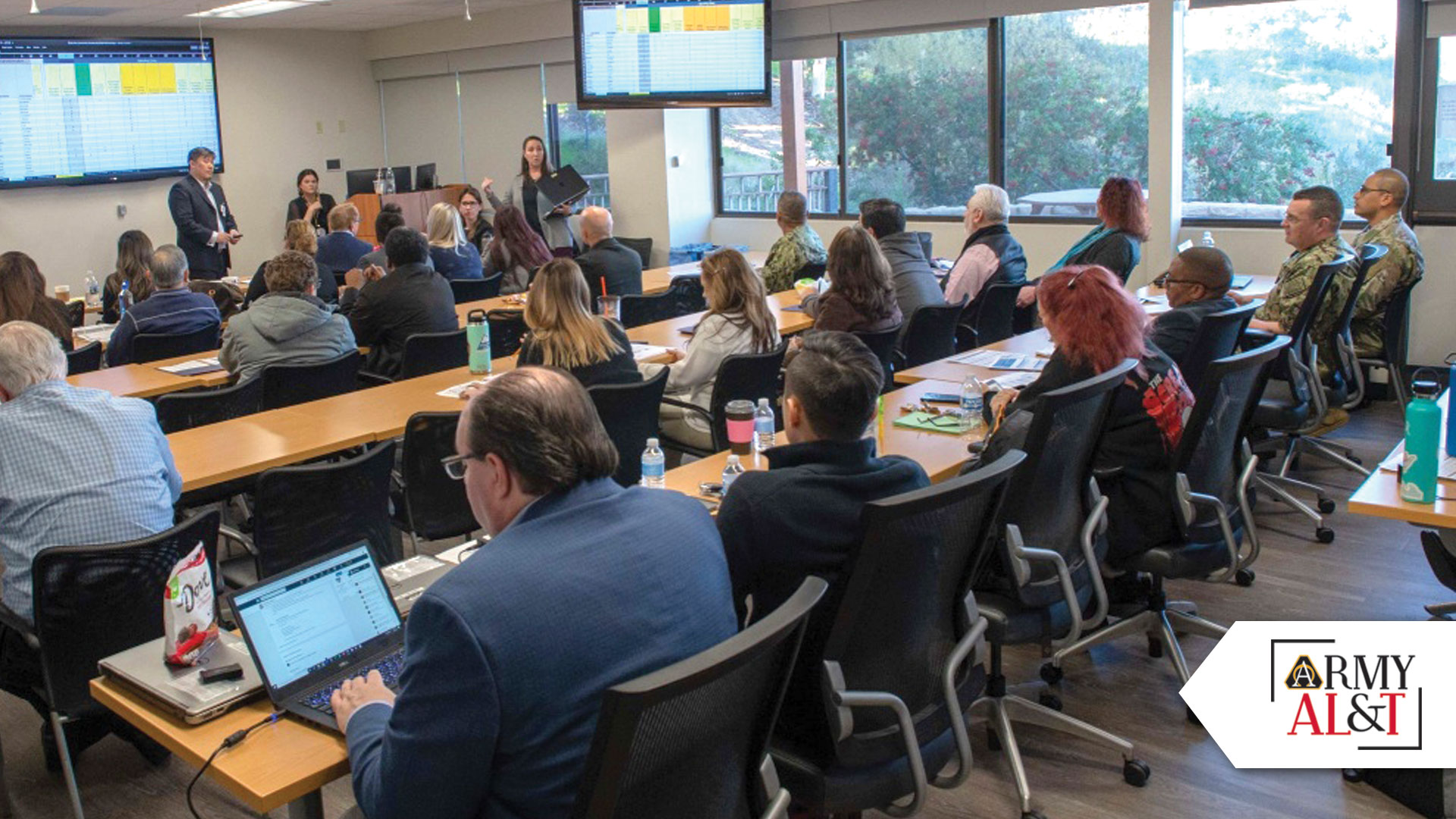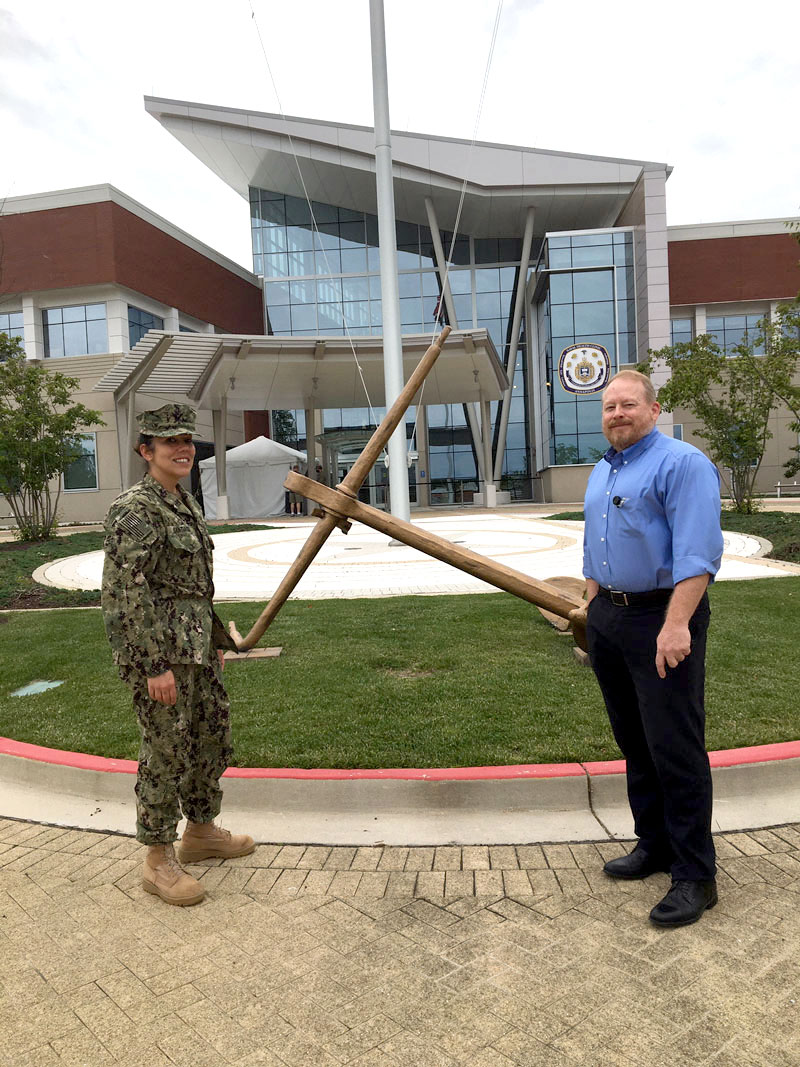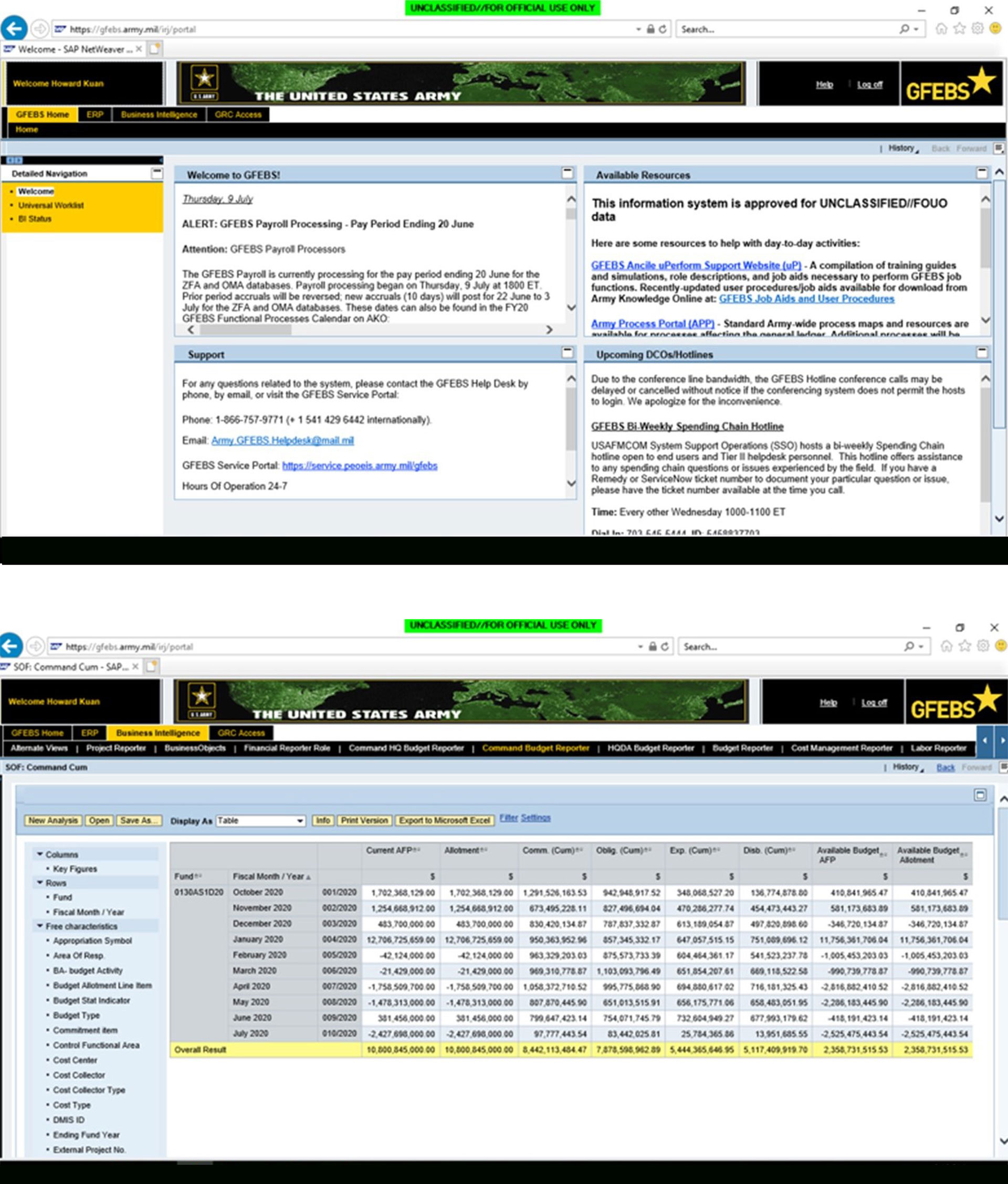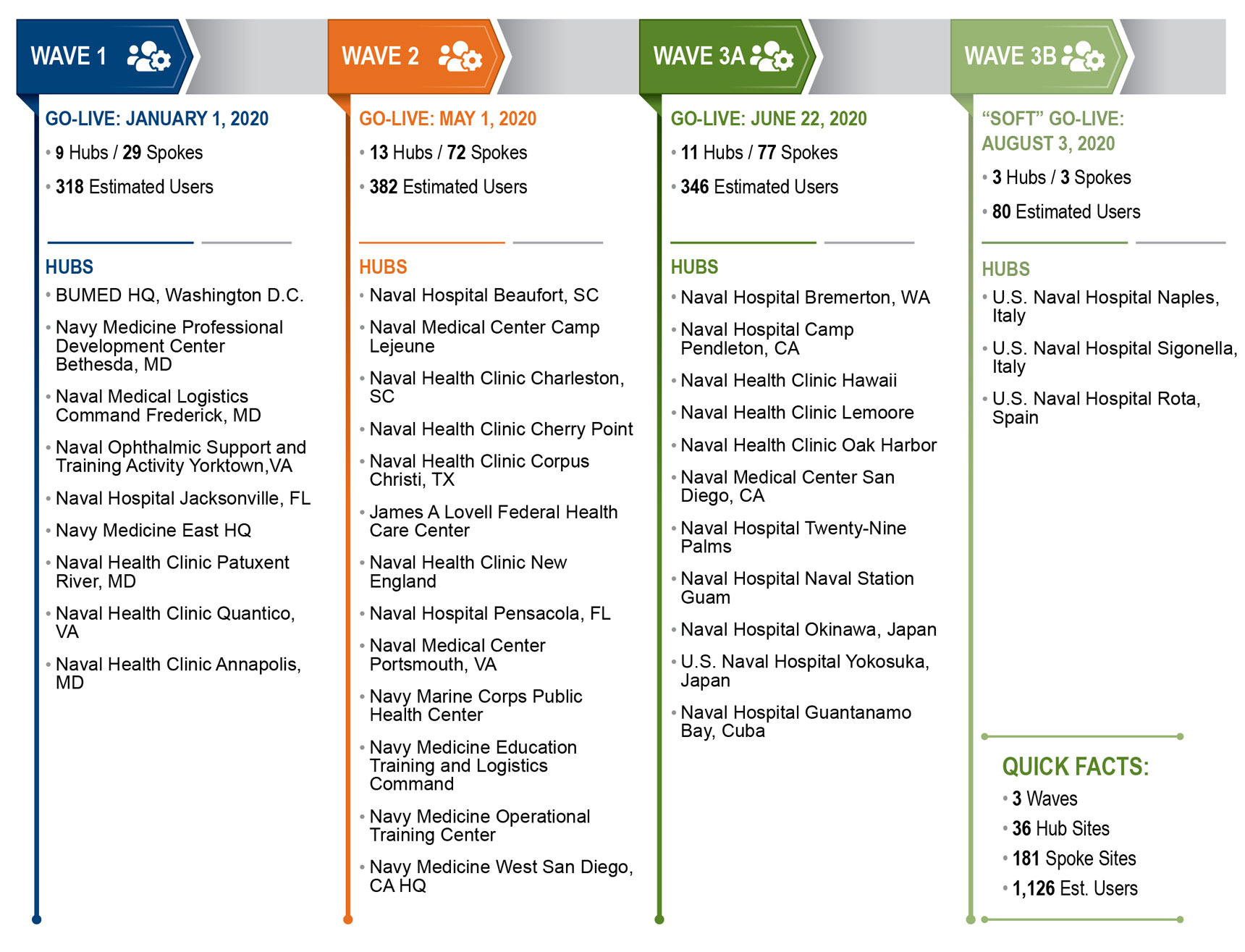
ON THE ROAD AGAIN: Sailors and civilians assigned to Naval Medical Center San Diego attend a Bureau of Medicine and Surgery roadshow that brought the Army’s GFEBS rollout team to San Diego to provide training on the new system, which will be implemented at the hospital. (U.S. Navy photo by Petty Officer 3rd Class Harley Sarmiento)
Teaming with industry, the Army is helping the Navy adopt its General Fund Enterprise Business System.
by Paul “Pablo” McKellips
Mention the word legacy in a military setting and images of Chesty Puller, Colin Powell and Chester Nimitz come to mind. There is the legacy of Michael Jordan in basketball, Jim Brown in football, Mia Hamm in soccer and Babe Ruth in baseball.
Legacy.
But add one word to the end of legacy, and a “Field of Dreams” quickly morphs into a swamp of nightmares.
Legacy systems.
SPECIFICALLY, FINANCIAL SYSTEMS
With more than 35,000 current users, the U.S. Army has replaced upward of 80 legacy systems for 37 different organizations in 71 countries with its comprehensive solution, General Fund Enterprise Business System (GFEBS). GFEBS is an enterprise-resource planning solution that integrates financial, cost and performance data across the Army and beyond. The software system captures and records financial transactions on a single, worldwide platform, eliminating the need for data reentry. Built on SAP commercial off-the-shelf software, GFEBS complies with statutory and regulatory requirements for funds control and accounting, providing real-time visibility that improves financial decision-making.
The GFEBS implementation is designed to standardize business processes by replacing or subsuming legacy accounting and asset management systems to maximize the potential for a successful financial statement audit. GFEBS allows the Army to track and audit each business event to ensure proper financial accountability.
Fully fielded in 2012, GFEBS improves internal controls by providing full cost reporting of the various operating agencies for the proper use and control of their budgets. In addition, GFEBS accommodates emerging requirements, including improved funds balance with the U.S. Treasury. It has simplified processes of the financial community by sunsetting legacy systems, and has improved integration of financial data across DOD. GFEBS is a project management office within the Program Executive Office for Enterprise Information Systems (PEO EIS).

SPANNING THE DISTANCE: Comptroller Lt. Carla Santiago of the Naval Health Clinic Annapolis and Deputy Comptroller John Day discuss the GFEBS platform while maintaining the recommended social distance outside the clinic. (Photo by the author))
WELCOME ABOARD, NAVY
With the Army’s transition to GFEBS now complete, it was time to bring the Navy on board. In late 2018, Vice Adm. C. Forrest Faison III, the Navy surgeon general, mandated that Navy Medicine transition from its Standard Accounting and Reporting System – Field Level (STARS-FL), a “noncompliant legacy accounting system,” to GFEBS.
The Defense Health Agency had the mission to consolidate all military health systems into one systemwide accounting solution so as to meet the requirements for financial auditability and comply with other DOD initiatives and reporting requirements.
The Navy’s Bureau of Medicine and Surgery (BUMED) and the Army’s GFEBS portfolio managers quickly forged a strategic alliance to navigate away from STARS-FL and over to the GFEBS platform.
“Our original schedule took us out to the summer of 2021,” said Maj. Lloyd Alaimalo, the assistant product manager of GFEBS who serves as the project lead for BUMED. “Once underway, the mission objective was accelerated to complete the transition to GFEBS prior to the start of the government’s fiscal year 2021.”
Navy BUMED has an enormous global footprint, loaded with geographic and logistical challenges. Throw in an accelerated timeline—then amplify that with a global pandemic—and software conversion becomes a much harder pill to swallow, even for Navy Medicine.

SAFE HARBOR FOR SAILORS: The Naval Health Clinic Annapolis, which went live on the GFEBS platform on Jan. 1, 2020, provides medical services to the United States Naval Academy as well as active-duty Sailors and their families in the area. (Photo by the author)
MAKING WAVES
IBM’s Federal Government Sector team offered an innovative solution as an industry partner to the GFEBS program. The BUMED deployment was broken down into four geographical waves, starting on the East Coast of the United States in Wave 1, and moving incrementally across the globe. The BUMED conversion to GFEBS would take place in multiple waves, ultimately fielding to more than 1,100 users at 36 separate military treatment facilities.
According to Tom Kennedy, BUMED project manager on the IBM Army GFEBS program, IBM’s key role was to lead the organizational change management to make the transition a success. “Our mission was to transition BUMED from STARS-FL to GFEBS on schedule, giving them the knowledge and skills necessary to perform their daily duties.”
Moving Navy BUMED from legacy systems to GFEBS was not a “light switch” event. The Army deployed roadshow teams comprising five IBM staffers; Alaimalo as the GFEBS project lead; representatives from the functional organization, the Office of the Assistant Secretary of Defense for Health Affairs; and a BUMED transition team of experts familiar with both the old Navy system and the new Army platform.
A comprehensive team of stakeholders is part of every GFEBS implementation.
Scott Wardell is director for Health Affairs, the proponent organization for the BUMED deployment of GFEBS. Wardell oversaw a team of experts who assisted in the coordination of the roadshow development. Health Affairs bridged the gap between “as is” and “to be.”
“The roadshow team has their boots on the ground and visits each site,” said Alaimalo. “It’s an important part of the deployment where end users can meet with the folks who have the subject matter expertise. All stakeholders—IBM, Health Affairs, GFEBS and the BUMED transition team—all have a piece of it and own the success.”
“It was like a whole new language,” said John Day, deputy comptroller for Naval Health Clinic Annapolis. “It helped having people there who spoke both languages—Navy and Army—so that we could better understand the language we were learning.” The roadshows included training, transactional simulations and role-playing to define the various user roles. “The training was very good,” said Day. “It wasn’t like typical military training where you have to click through slides. You actually had to pay attention and do some transactions.”

A LOOK INSIDE: The GFEBS software captures and records financial transactions on a single, worldwide platform, eliminating the need for data re-entry. It is built on SAP commercial off-the-shelf software, and complies with statutory and regulatory requirements for funds control and accounting. (Image courtesy of PEO EIS)
GETTING TO GREEN
There are many different user roles within GFEBS. Data entry, inventory, cost management, reconciliation and analysis are just a few. To bridge the language gap between Army and Navy, roadshows focused on identifying how each person at the Navy’s military treatment facilities would use GFEBS to perform their daily duties. “We gave out initial role assignments and quickly realized we gave some people too much access—others not enough—and had to dial that back a bit,” said Day.
Every role assigned during the roadshow incorporates associated training that must be completed by the user before accessing GFEBS. “We monitor the metrics of these users as they prepare for GFEBS,” said Alaimalo. “We review these numbers with the customer every week. A week from ‘go live,’ we have a ‘go/no-go’ decision meeting with all stakeholders. We produce the latest metrics, and senior leaders vote on whether a site is ready to go live or not. Our mission is to always get to green.”
“Health Affairs worked closely with the Army on change management, communications and training activities,” said Wardell. “With our most recent wave, we became the only organization to have 100 percent of all users trained prior to go-live.”
WEATHERING COVID-19
Naval Health Clinic Annapolis, which was part of Wave 1, went live on the GFEBS platform on Jan. 1, 2020. “Our over-the-shoulder support was scheduled to end after 90 days, around the beginning of April,” recounted Day. “COVID pulled them out of here sooner than planned. Being able to pick up the phone and have a question answered was still a great benefit, but just not the same as having an expert sitting outside my office.”
“We had to exercise flexibility to respond rapidly to COVID-19 challenges faced by military treatment facilities throughout the world,” said IBM’s Kennedy. “Moving from an on-site, in-person user support strategy to a virtual approach for both roadshow and over-the-shoulder support was a significant undertaking in both planning and execution. There was no interruption to the support provided to Navy facilities, and it has proven to be an effective approach to deploy GFEBS.”
Wave 2 began on May 1 and stretched from the Charleston, South Carolina, military treatment facility to the one at Great Lakes, Illinois, from Corpus Christi, Texas, to Navy Medicine West in San Diego. It encompassed 13 more sites and more than 380 additional users. Wave 3 received the go-live decision on time in late June, adding 11 sites and more than 340 users to GFEBS.

THE CREW: The Office of the Deputy Assistant Secretary of the Army for Financial Information Management, the Health Affairs Functional Champion and the U.S. Army Financial Management Command’s Systems Support Operations each provided support to the GFEBS transition effort. (Image by PEO EIS)
AUDITABILITY SEA CHANGE
In the world of military finance and accounting, auditability is the GFEBS game changer. Perhaps the greatest benefit of GFEBS is the audit trail and traceability. Every transaction is recorded and available instantly with complete transparency.
“Auditability is really the byproduct of accountability,” said Jonathan Moak, the senior official performing the duties of the assistant secretary of the Army for financial management and comptroller. “GFEBS was designed to deliver functionality that enhances accountability through increased transparency. Improving the efficiency and oversight of business processes is what will ultimately put you on the path to a successful audit. With that in mind, it’s important that we, the Army, continue to share systems that encourage good business practices that benefit our service members and fulfill our obligations to the American taxpayer.”
The Navy agrees that through GFEBS, accountability has increased dramatically. Day explained the power of real-time visibility. “GFEBS is much more robust than what we were used to,” he noted. “You can go through and see the transactions. You can see who did what. The greatest impact is to your financial statements and your auditability. If I want to look up something, I can go into GFEBS and find the information quickly.”
As an example, Day elaborated on the process to track pharmacy orders. “In STARS-FL, I could probably go back, but I would need to pull in other people and other systems to see where pharmacy placed an order. Now, in the single GFEBS system, you can see exactly how much aspirin was ordered, how much it cost, who placed the order and when it was delivered.”
LESSONS LEARNED
GFEBS changes and simplifies business processes for Navy Medicine, from payroll to the way goods and services are procured subject to a real-time check of available funds. BUMED is now in full compliance with congressional and DOD requirements, and it meets the critical milestones for financial statement auditability. As with all organizations on the GFEBS platform, senior leaders can now focus on critical analysis instead of data entry and reconciliation.
“Collaboration between the numerous organizations involved with the deployment has been critical to the successful fielding of GFEBS,” said Wardell. “The Health Affairs-led stakeholder council brought senior leaders from all organizations together monthly to review progress, challenges and solutions.” In addition, weekly deployment meetings and system focus groups prepared other stakeholders and educated the BUMED community. But as with any major change, there have been a few challenges along the way.
“Was the GFEBS changeover smooth for Navy Medicine? Yes and no,” said Day. “The soft launch was good because at the time, we had minimal funds until the third quarter,” which meant there were only a few options for documents to be processed. “It was nice to be dealing with a small universe of a few documents in case we had issues. But we felt that we were ready to go full bore on day one in the full system. If we had been overwhelmed with a lot of transactions, it might have made things more difficult in the beginning, but in the long run, it might’ve put us farther ahead in the learning curve.”

WAVE ON WAVE: GFEBS was deployed to Navy Medicine in geographic waves, beginning with facilities throughout the eastern U.S. and ending with locations on the West Coast and outside the continental U.S. (Image by PEO EIS)
CONCLUSION
In addition to Navy BUMED, GFEBS is now being used at Walter Reed National Military Medical Center, National Capital Region Medical Directorate, the Defense Health Agency and the Uniformed Services University of the Health Sciences, as well as more than 30 other organizations. Other branches of the military will likely transition to GFEBS in the future as part of DOD’s ongoing effort to modernize and streamline its enterprise resource planning systems.
The example provided by the Army-Navy partnership, accomplishing this complex transition a full year ahead of schedule, serves as a model for those yet to make the leap. Teamwork is the new legacy.
For more information, go to https://www.eis.army.mil/programs/gfebs or https://www.milsuite.mil/book/groups/gfebs.
PAUL “PABLO” MCKELLIPS provides strategic communication support at PEO EIS for Credence Management Solutions. He served as a global outreach officer in Baqubah, Iraq (2006-2007); NATO’s public affairs trainer to the Afghan National Army’s 203rd Corps in Paktia, Afghanistan (2010-2011); press secretary at the Federal Emergency Management Agency; and strategic communication support to the Army’s Chief Information Officer/G-6. A veteran of the U.S. Air Force, he has an M.A. in international relations from the University of Memphis and a B.A. in journalism from Oral Roberts University.
Read the full article in the Fall 2020 issue of Army AL&T magazine.
Subscribe to Army AL&T News – the premier online news source for the Army Acquisition Workforce. ![]() Subscribe
Subscribe







